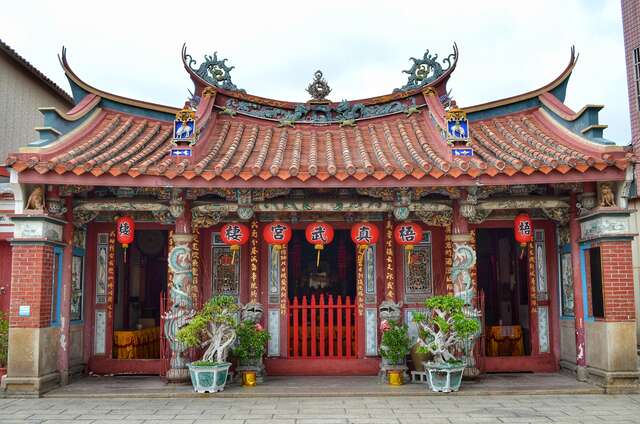Wuqii Zhenwu Temple Introduction
During the Japanese colonial period, it was rebuilt after the earthquake in Showa 10 (1935). In terms of overall temple architecture, it has been able to retain the original Minnan style and form of the temple. The temple faces south, with a complete layout of the Sanchuan Hall, Worship Hall, and Main Hall, although due to the narrow construction site, the Worship Hall extends and connects with the Sanchuan Hall, which is rather unique. The facade of the Sanchuan Hall is still wooden and features a hardened mountain style of architecture, characterized by elegant large wooden structures and beautiful gourd-shaped designs, belonging to the Quan school of craftsmanship. The lines are smooth and simple, and the detailed decorations are plain and clean, fully showcasing the traditional craftsmanship of the local artisans. To avoid the strong northeastern monsoon along the coast, the overall height of the Zhenwu Temple is lower, creating a unique stable atmosphere and thus fully preserving the traditional appearance of the temple, making it a precious cultural asset of Wuqi Old Street. Text source: Taichung City Cultural Assets Office




























